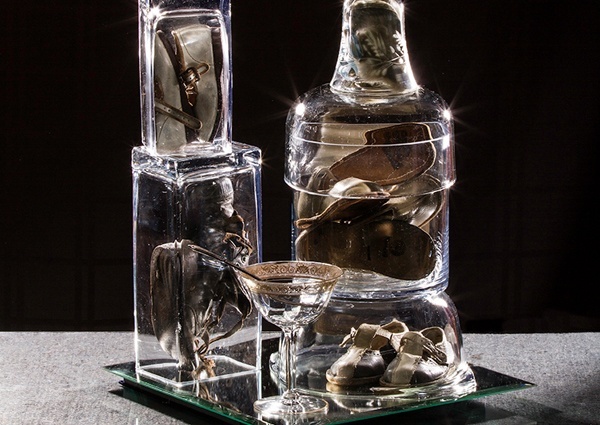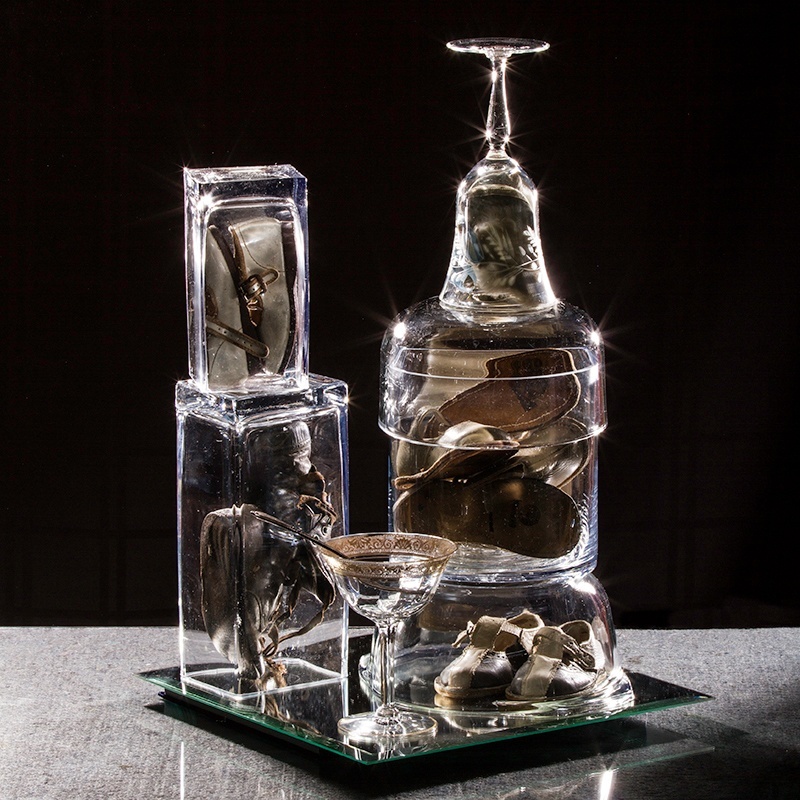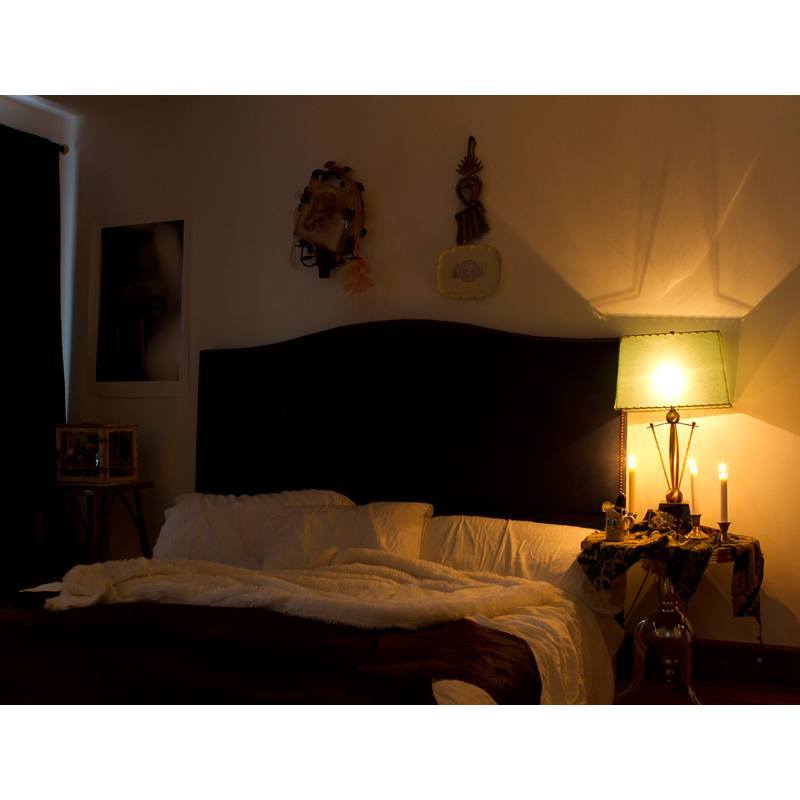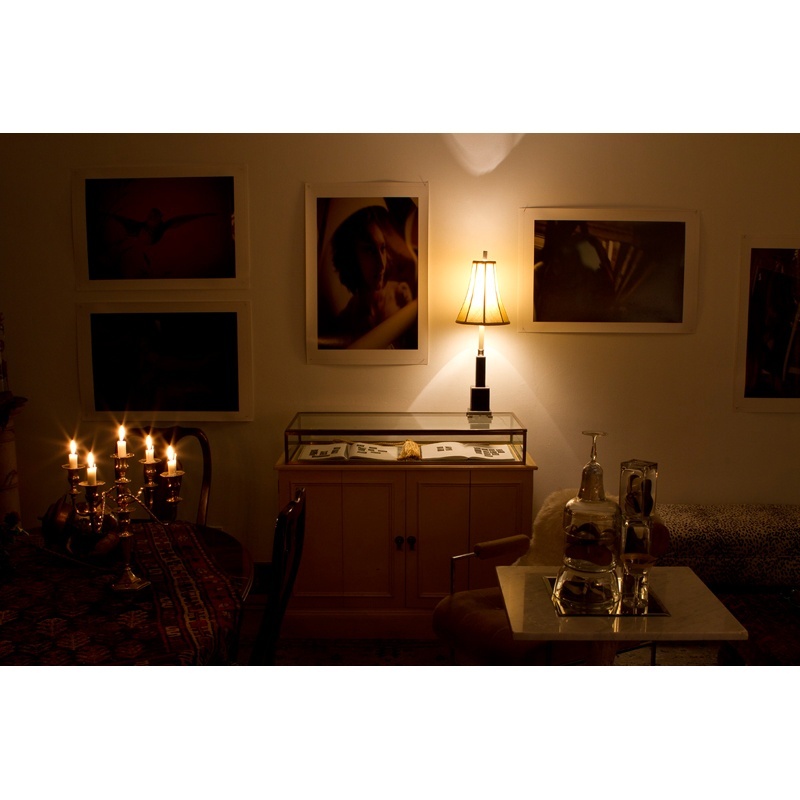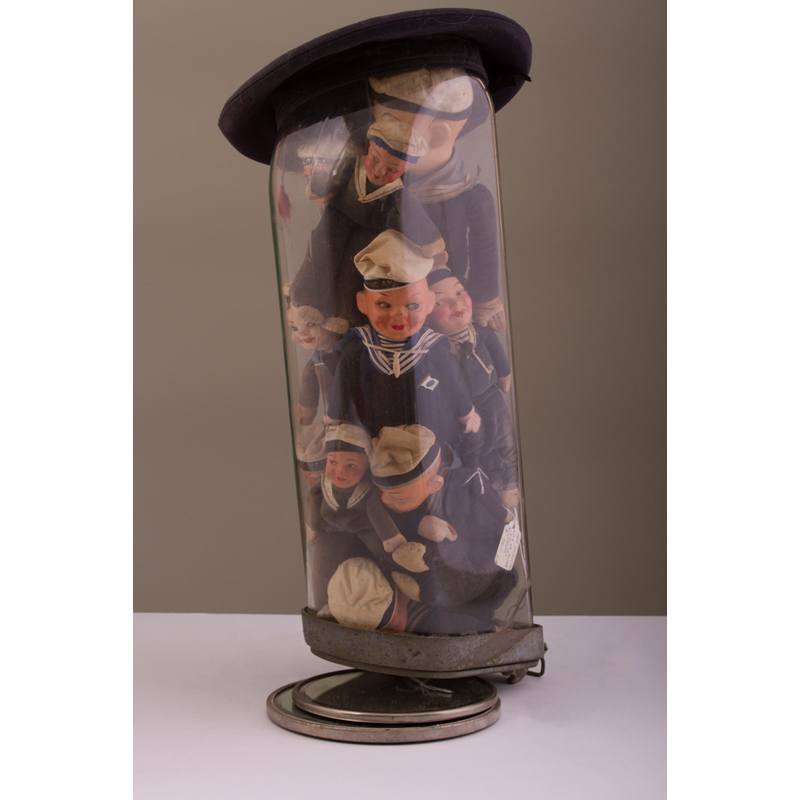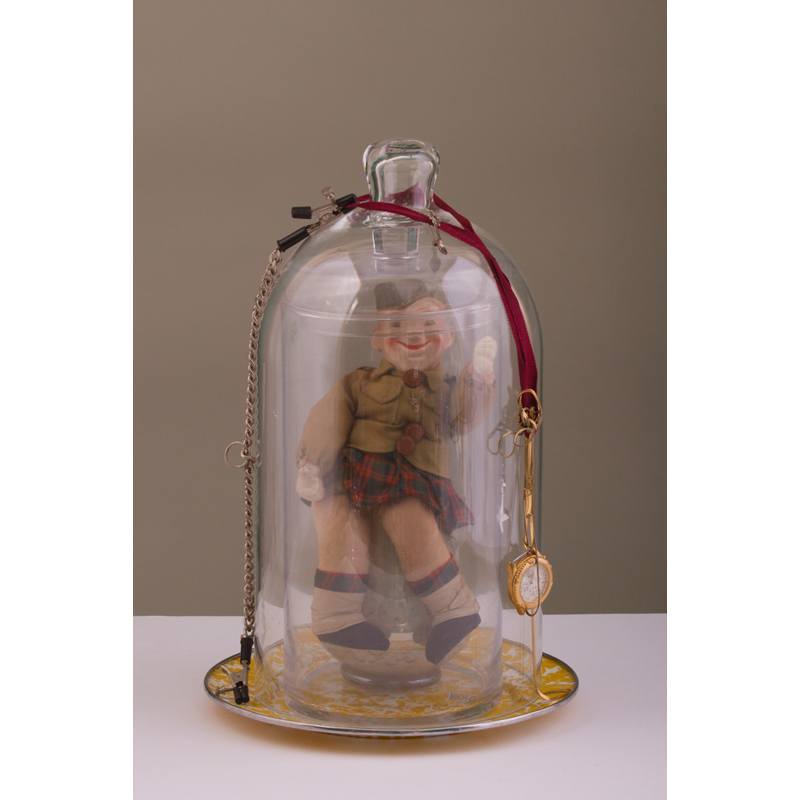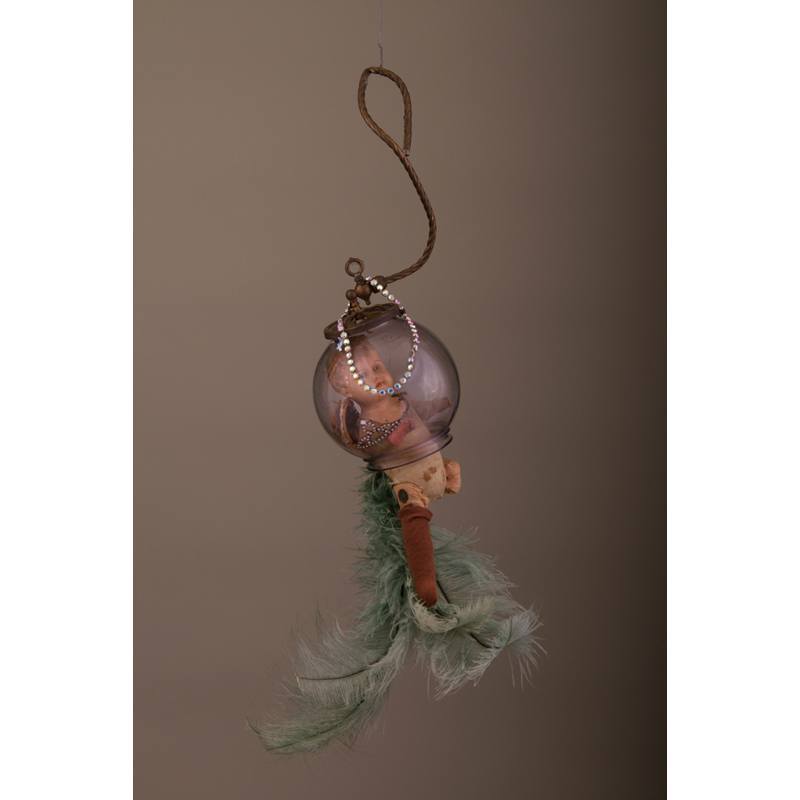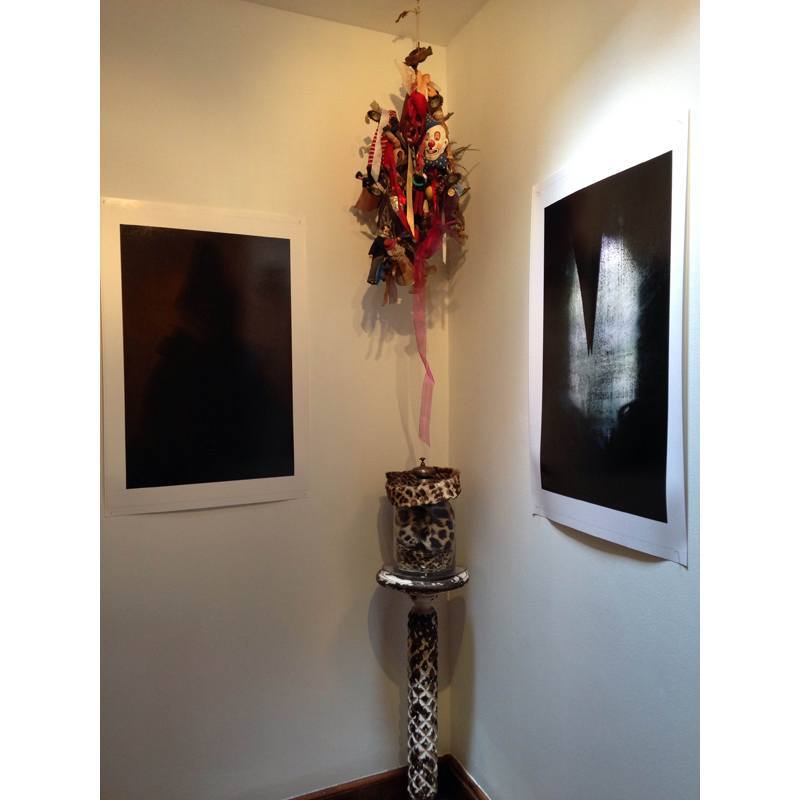The Christmas Blob, 2009, installation view
In his latest exhibition, The Dark Parade, David Armstrong reveals he is firmly under the spell of sculpture. Installed in Casa de Costa’s new space, a nineteenth-century carriage house, the show fills two floors with assembled ephemera collected in flea markets from decades of traveling to Europe with his friend and contemporary, the photographer Nan Goldin. On the evening of the preview, Armstrong describes in soft tones how his ideas began to shift. “It was this six-month period where I was looking at images way too much. Late at night I would start [making] these… things.”
Known internationally for his portraits of beautiful young men caught between adolescence and adulthood, Armstrong uses saturated colors and black-and-white film to showcase the individuality of his subjects, summoning deep desire with his lingering gaze. In his world, shadows arouse intense longing in the viewer, as light carves out a bicep, or illuminates a torso. His work is associated with the Boston School, a group of photographers who emerged from the School of the Museum of Fine Arts, Boston, in the 1980s—Philip-Lorca diCorcia, Jack Pierson, Gail Thacker, and Shellburne Thurber—who documented night crawlers, addicts, and other characters outside “decent society” from the point of view of friends and lovers, rather than as voyeurs.
For decades, Armstrong lived in Brooklyn’s Bedford-Stuyvesant neighborhood at 615 Jefferson Avenue, the location of some of his most famous images (and monograph of the same name), but he recently moved to the Berkshires to get some time away from his day job as a highly sought-after fashion photographer. “I was having nightmares all last year about photo shoots. I had one last week and it was horrifying; I woke up in a cold sweat,” he says.
It’s a curious place, acting as a house for intimate encounters, a place of mourning, and an acknowledgment of the march of time, all at once.
The Dark Parade goes beyond evoking nostalgia, recreating the experience of his previous home. The gallery sits at the back of a stone courtyard, and entering feels both like an intrusion and a welcome disruption—as if the objects are waiting for you to discover them. Visiting is creepy, melancholic, and also humorous, because Armstrong knows the importance of camp. In a room on the top floor, a bed with mussed-up sheets takes up half the space, and viewers have to navigate around it. Next is the bathroom, where a piece entitled “Doll Sconce Ornament” (2012) hangs above a tub filled with tall, leafy plants. It’s a curious place, acting as a house for intimate encounters, a place of mourning, and an acknowledgment of the march of time, all at once.
“The way I fuss over things is insane,” Armstrong says, laughing. “I could spend an hour with one little piece of confetti. It’s really amazing the physics of things, because things don’t stay. You have to do all this mad balancing.” The pieces recall Mike Kelley’s tortured stuffed animal assemblages and Joseph Cornell’s intricate, surreal boxes of found items. Armstrong’s objects play out scenes from his life, or act as memento mori: in the front room, encased in glass, a group of dancing dolls are dressed up in uniforms—one wearing lederhosen—evoking wild nights during his previous trips to Berlin, before the AIDS crisis. He admits that many of his friends are now gone, lost to the disease, suicide, or other forms of death; these new works are small tributes to those who remain ensconced in his memory. They also may serve as a way to let go. The title of the exhibition, The Dark Parade, is taken from “There’s Been a Death in the Opposite House” by Emily Dickinson—Armstrong’s favorite poet.
His next project is a tribute to his friend René Ricard, the essayist, poet, and Warhol star who died in February. As Ricard wrote in a New York Times 1978 op-ed: “The fact of the matter is that if I worked a straight job I wouldn’t have time to do the serious business of my life, which is to amuse and delight.” Armstrong has followed suit, amusing, delighting, and disturbing us with his new creations, each of which reveals a life lived on his own terms. “I’m a big baby and I want to do what I want,” he says. “It’s so true that you cannot be untrue to yourself. It’s the worst thing you could ever possibly do.”
Kathleen Massara is the former arts and culture editor of the Huffington Post.
The Dark Parade runs through May 22.
